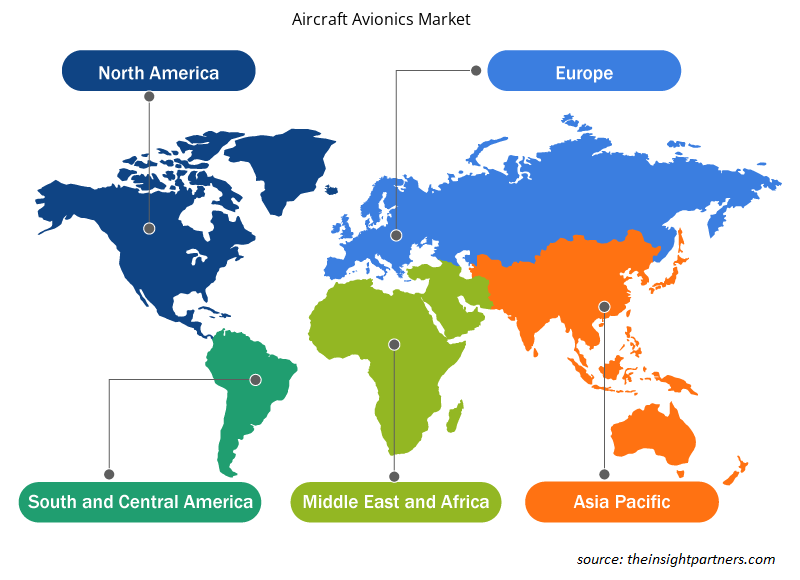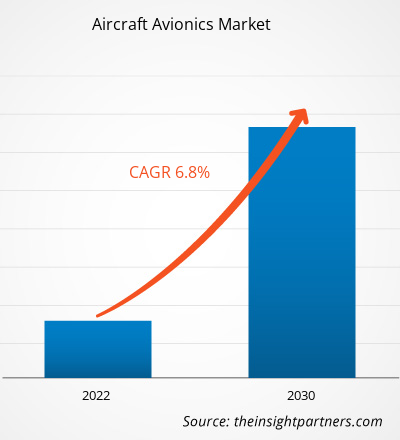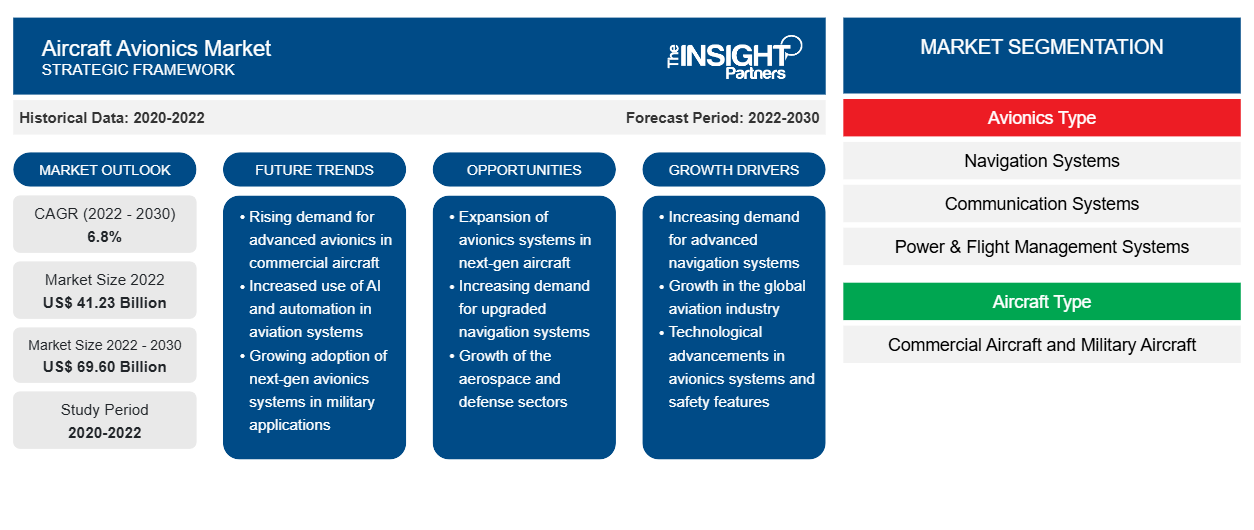[研究报告] 飞机航空电子设备市场预计将从 2022 年的 412.3 亿美元增长到 2030 年的 696 亿美元;预计 2022 年至 2030 年的复合年增长率为 6.8%。
分析师观点:
过去几年,飞机航空电子设备市场取得了巨大的增长。推动飞机航空电子设备增长的主要因素之一是全球飞机机队的增加和旧飞机机队的翻新。推动飞机航空电子设备市场增长的另一个主要因素是飞机部件的电气化程度不断提高,这也产生了对操作飞机的飞行员进行电子控制的需求。飞机航空电子设备制造商主要专注于开发创新产品以保持市场竞争力。然而,一些因素对市场构成了挑战,包括飞机运营引起的环境问题加剧以及航空电子设备部件安装成本上升。
市场概况:
未来几年,飞机航空电子设备市场可能会实现健康增长。这主要是由于未来几年预计的飞机交付量。例如,根据波音公司的《2023 年商用市场展望》(CMO)报告,预计航空公司在未来 20 年内将需要 42,595 架新商用飞机来满足快速增长的航空客运量。同样,根据空客全球市场预测(GMF)报告,预计到 2042 年底,航空公司将采购约 40,850 架新飞机。这些因素可能会在未来几十年为飞机航空电子设备市场供应商创造巨大的机会,预计在同一时期,其他飞机部件的需求也将大幅增加。此外,飞机部件电气化的不断提高以及飞机从机械部件向电气部件的转变是推动不同地区飞机航空电子设备市场增长的其他一些因素。
定制此报告以满足您的需求
您可以免费定制任何报告,包括本报告的部分内容、国家级分析、Excel 数据包,以及为初创企业和大学提供优惠和折扣
- 获取此报告的关键市场趋势。这个免费样品将包括数据分析,从市场趋势到估计和预测。
市场驱动因素:
不断增长的 MRO 行业正在产生对飞机航空电子设备的新需求
改装是指在旧飞机机队上安装或添加新技术,有助于提高乘客的舒适度和安全性,并方便航空公司维护旧机队。飞机技术的不断进步导致 MRO 能力的升级。MRO 服务提供商不断寻求升级和采购新技术,以便为新飞机提供服务,并在旧飞机机队上改装升级后的技术。在当前情况下,由于燃油价格下跌,全球商业航空公司仍在保留旧飞机机队。这一因素迫使航空公司频繁选择 MRO 活动,这促使 MRO 服务提供商向航空公司提供使用新技术改装飞机机队的服务。改装趋势在 MRO 服务提供商中飙升。因此,将先进和现代技术(例如包括航空电子系统在内的先进飞机电子设备)整合到旧飞机机队中,预计将在未来几年推动飞机航空电子市场格局以及航空业的面貌。
对实时数据分析的需求正在上升,特别是在欧洲和北美等技术先进的潜在地区,上述技术的采用正在以指数级的速度成熟。
节段分析:
根据航空电子设备类型,市场细分为导航系统、通信系统、电源和飞行管理系统、天气监测系统、电子飞行显示器等。电源和飞行管理系统部分在 2022 年占据了最大的市场份额,预计在 2022 年至 2030 年期间也将保持主导地位。此外,预计电源和飞行管理系统在 2022-2030 年期间也将在飞机航空电子设备市场中实现最高的复合年增长率。电源和飞行管理系统部分占据最大市场份额的主要因素是其较高的价格、技术集成,并且它是飞行员的关键控制器之一,使他们能够在任何飞行过程中都能看到飞机的运行情况。此外,由于在任何飞行过程中的大多数飞机操作中都使用电源和飞行管理系统,因此对电源和飞行管理系统部分的需求也受到推动。此外,更好地管理飞行部件和实时飞行控制状态的必要性是推动不同地区飞机航空电子设备市场增长的另一个主要因素。
区域分析:
2022 年北美飞机航空电子设备市场价值为 132.6 亿美元,预计到 2030 年将达到 212.4 亿美元;预计 2022 年至 2030 年期间的复合年增长率为 6.1%。北美地区一些主要的飞机 OEM,如波音、庞巴迪、洛克希德马丁和空客,他们在该地区的不同地方设有各自的生产设施,并不断从各自的设施产生对飞机电子产品的新需求。这一因素推动了整个地区飞机航空电子设备产品的增长。此外,催化北美飞机航空电子设备市场增长的另一个主要因素包括美国和加拿大等国家/地区的飞机航空电子设备制造商。此类公司包括雷神技术公司、柯蒂斯-莱特公司、霍尼韦尔国际公司、通用电气公司、穆格公司和 BAE 系统公司等供应商。
关键球员分析:
飞机航空电子设备市场分析包括 L3Harris Technologies Inc、雷神技术公司、柯蒂斯-莱特公司、霍尼韦尔国际公司、通用电气公司、赛峰集团、英国航宇系统公司、Moog Inc、美捷特公司和 Garmin Ltd. 等参与者。其中,英国航宇系统公司、雷神技术公司、通用电气、美捷特公司和柯蒂斯-莱特公司凭借其提供的多样化产品组合,跻身飞机航空电子设备市场顶级参与者之列。
飞机航空电子设备市场区域洞察
Insight Partners 的分析师已详尽解释了预测期内影响飞机航空电子市场的区域趋势和因素。本节还讨论了北美、欧洲、亚太地区、中东和非洲以及南美和中美洲的飞机航空电子市场细分和地理位置。

- 获取飞机航空电子设备市场的区域特定数据
飞机航空电子设备市场报告范围
| 报告属性 | 细节 |
|---|---|
| 2022 年市场规模 | 412.3亿美元 |
| 2030 年市场规模 | 696亿美元 |
| 全球复合年增长率(2022 - 2030 年) | 6.8% |
| 史料 | 2020-2022 |
| 预测期 | 2022-2030 |
| 涵盖的领域 | 按航空电子设备类型
|
| 覆盖地区和国家 | 北美
|
| 市场领导者和主要公司简介 |
|
市场参与者密度:了解其对商业动态的影响
飞机航空电子设备市场正在快速增长,这得益于终端用户需求的不断增长,而这些需求又源于消费者偏好的不断变化、技术进步以及对产品优势的认识不断提高等因素。随着需求的增加,企业正在扩大其产品范围,进行创新以满足消费者的需求,并利用新兴趋势,从而进一步推动市场增长。
市场参与者密度是指在特定市场或行业内运营的企业或公司的分布情况。它表明在给定市场空间中,相对于其规模或总市场价值,有多少竞争对手(市场参与者)存在。
在飞机航空电子设备市场运营的主要公司有:
- L3Harris技术公司
- 雷神技术公司
- 柯蒂斯·莱特公司
- 霍尼韦尔国际公司
- 通用电气公司
免责声明:上面列出的公司没有按照任何特定顺序排列。

- 了解飞机航空电子市场的主要参与者概况
最新动态:
飞机航空电子设备市场中的公司广泛采用产品发布、合并和收购等无机和有机策略。例如,2023 年 4 月,GE Aerospace 和 AJW Group 签署了一项协议,为 B777、B737 和 A320/30/40 系列飞机型号提供航空电子设备和电力系统支持。同样,2021 年 12 月,HAL(印度斯坦航空有限公司)与 BEL(巴拉特电气有限公司)签署了一份价值 2.88 亿美元的合同,为 LCA Tejas Mk1A 战斗机项目提供航空电子组件。从供应商的角度来看,这些因素也推动了飞机航空电子设备市场的增长。
- 历史分析(2 年)、基准年、预测(7 年)及复合年增长率
- PEST和SWOT分析
- 市场规模、价值/数量 - 全球、区域、国家
- 行业和竞争格局
- Excel 数据集
近期报告
客户评价
购买理由
- 明智的决策
- 了解市场动态
- 竞争分析
- 客户洞察
- 市场预测
- 风险规避
- 战略规划
- 投资论证
- 识别新兴市场
- 优化营销策略
- 提升运营效率
- 顺应监管趋势





















 获取免费样品 - 飞机航空电子设备市场
获取免费样品 - 飞机航空电子设备市场